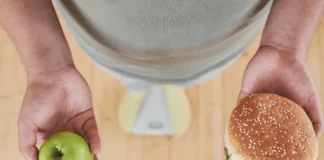What is a vegan diet? What are its components?
A vegan diet is different from other diets. For example, a vegetarian diet only allows for vegetables, and a pescatarian diet only allows fish as the main component. You can’t have meat or poultry in any of these lifestyles.
A vegan diet, or a plant-based diet, does not contain meat, dairy either, or any food that comes from an animal. It includes fruits, vegetables, beans, grains, nuts, and seeds.
There are many different plant-based diets, including the Raw Vegan Diet, the Vegan Keto Diet, the Vegan Diabetic Diet, the High Protein Vegan Diet, the Alkaline Vegan Diet, and the Vegan Anti-Inflammatory diet.
Why would someone change their lifestyle to adopt a vegan diet?
There may be a desire for a healthier lifestyle. Weight reduction, as the end goal, is one reason. Another might be ethical reasons like diminishing your carbon footprint or ending your support of cruelty to animals.
What are the benefits of a vegan diet? One advantage of a vegan diet is that it lowers the chance of colon cancer.
You can switch to a vegan lifestyle in as short as 90 days, and here’s how!
- Every diet begins with an internal examination. Ask yourself why you are choosing to embark on a vegan diet. You’re ready to take the next step once you have an answer and are committed.
- Go shopping for all the items you will need. To avoid going back to old eating habits, plan your meals for the next three months and include enough to have double what you’ll need. This way, you’ll have leftovers the next day if you’d like.
- Choose an alternative milk like soy or oat milk. These milk substitutes are made from nuts, not dairy. If you have a recipe that calls for cream, replace it with soya cuisine made with soybeans., the same as soy milk.
Tip: Whipping soya cuisine will make it both creamy and light.
Think of any plant-based meals or snacks you already enjoy, like:
- Stir-fried vegetables
- Bean and rice burritos
- Lentil stew
- Peanut butter and banana sandwiches
- Vegetable lasagna (if the pasta does not contain eggs)
Slowly eliminate animal products you don’t enjoy so much from your diet. Start with one food group at a time. If meat was a small part of your previous diet, start with that. Then, move on to food items like:
- Soy milk and soy-based yogurt instead of dairy.
- Nutritional yeast instead of cheese.
- Aquafaba, which is the water from a can of chickpeas) in place of egg whites. This can also be used in baked goods, mousses, and other desserts.
- Tofu scrambled with Himalayan black salt and nutritional yeast to replace eggs.
As you remove animal-based foods and ingredients from your diet, you can begin to replace them with foods allowed in your vegan diet, like:
- Legumes
- Tofu
- Nuts
- Beans
- Seeds
Managing your transition from a regular diet to a vegan lifestyle this way will make it easier for you to eliminate animal products from your diet.
Conduct an online search of your favorite meals calling for animal-based products, then search for a vegan version.
We now have the basics. Let’s try the easy-to-make vegan meals below. The idea is to help get you started. These can be made in twenty minutes or less.
Breakfast: Avocado Toast with Alfalfa Sprouts
Ingredients:
- 1 cup mixed salad green
- One teaspoon of red wine vinegar
- One teaspoon of extra virgin olive oil
- Pinch of salt
- Pinch of pepper
- Two slices of sprouted whole-wheat bread toasted
- ¼cup plain hummus
- ¼ cup alfalfa sprouts
- ¼ avocado, sliced
- Two teaspoons unsalted sunflower seeds
Directions: Incorporate vinegar, oil, salt, and pepper with your greens in a bowl. Generously spread hummus on each slice of toasted bread using all of it. Place avocado on bread. Finish with greens and alfalfa sprouts, and top with sunflower seeds.
Lunch: Veggie Olive Wrap with Mustard Vinaigrette
Ingredients:
- 1 carrot, shredded or grated coarsely
- 80g or two ¼ oz. of finely shredded red cabbage
- Two thinly sliced spring onions or scallions
- One smooth-skinned summer squash, like zucchini – shredded or coarsely grated.
- A handful of basil leaves
- Five green olives, pitted and halved
- ½ tsp. English mustard powder
- 2 tsp extra virgin olive or rapeseed oil
- 1 tbsp cider vinegar
- One large, seeded tortilla
Directions: Incorporate all ingredients except the tortilla into a bowl and mix well. Put the tortilla on a sheet of aluminum paper, then place a generous amount of the mixture atop it and begin rolling firmly, folding in the sides as you move. Then, wrap foil around it and cut it in half. Eat immediately.
Dinner: One Pot Tomato Basil Pasta
Ingredients:
- 8 oz. whole wheat rotini
- 1 cup water
- 2 cups low sodium “no chicken” broth
- 15 oz. or one can of unsalted diced tomatoes
- 2 tbsp extra virgin olive oil
- 1 ½ tsp Italian seasoning
- ½ tsp onion powder
- ½ tsp garlic powder
- ½ tsp salt
- ¼ tsp crushed red pepper
- 6 cups baby kale or spinach
Directions: Place all ingredients, except spinach and basil, in a large pot. Cover and cook on high heat until it comes to a boil. Once boiling, uncover, reduce heat to medium, and cook for ten minutes, then uncover and add spinach. Stir frequently until the liquid has evaporated, then add basil.
These are easy recipes and tasty too, to get you started. Do not be afraid to experiment. Many items you replace your old foods with will be less tasty. That’s a fact, but there are so many other options that you may like. Keep researching and finding other vegan items you will enjoy. Don’t give up!


